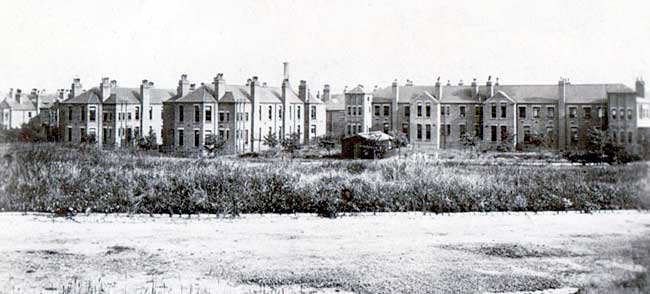
Nottingham City Hospital

Bagthorpe Institute and Infirmary, c.1910.
Like many of the other hospitals mentioned the City Hospital has its roots in the nineteenth century. Since 1892 there had been an isolation hospital on land at Bagthorpe. In 1893 the Charlotte Street area at the back of what is now known as Victoria Centre was demolished, along with the Union workhouse in York Street, to make way for the building of the Great Central Railway line. In 1896 the Board of Guardians were required to find alternative accommodation for the workhouse. They successfully purchased a 64-acre plot of land from the Nottingham Corporation off Hucknall Road and the foundation stone was laid for the new workhouse and infirmary in 1899 and the building was officially opened in 1903. The workhouse could accommodate 624 people and the hospital 750 patients.
Over the next 50 years additions were made to the hospital, including children’s wards, an operating theatre and a school for nursing as well as nurse’s homes. Both institutions underwent changes which were reflected in the name changes; old workhouse institute now named Valebrook Lodge and the infirmary the City Infirmary and then later in 1935 it became the City Hospital.
In 1948 when the National Health Service came into being the City Hospital became part of the Nottingham No 2 Hospital Management Committee. Since that time the hospital has become a leading hospital specialising in maternity care; oncology including breast cancer care; an upper limb unit, the Charnley Suite after the closure of Harlow Wood Orthopaedic Hospital and in 2003 the hospital celebrated its centenary and is still an extremely busy hospital.
There is a substantial amount of material written about the City Hospital which can be seen at the Nottingham Hospitals History website